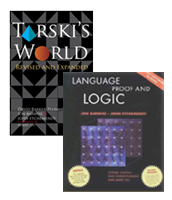
About a slightly earlier period, 1815, Beethoven's authoritative biographer, Alexander Wheelock Thayer, writes, "Diabelli, born near Salzburg in 1781, had now been for some years one of the more prolific composers of light and pleasing music, and one of the best and most popular teachers in Vienna. Franz Liszt was not included, but it seems his teacher Czerny arranged for him to also provide a variation, which he composed at the age of 11.īeethoven had had a connection with Diabelli for a number of years. His plan was to publish all the variations in a patriotic volume called Vaterländischer Künstlerverein, and to use the profits to benefit orphans and widows of the Napoleonic Wars. The work was composed after Diabelli, a well-known music publisher and composer, in the early part of 1819 sent a waltz of his creation to all the important composers of the Austrian Empire, including Franz Schubert, Carl Czerny, Johann Nepomuk Hummel, and the Archduke Rudolph, asking each of them to write a variation on it.

#7.17 LANGUAGE PROOF AND LOGIC WORLD SERIES#
At the end of the fugue, a culminating flourish consisting of a diminished seventh arpeggio is followed by a series of quiet chords punctuated by silences. Coming at this late point, after such a long period in C major, the key-change has an increased dramatic effect. Then, nearing the conclusion, Beethoven uses C minor for Variations 29–31 and for Variation 32, a triple fugue, he switches to E ♭ major. īeethoven does not seek variety by using key-changes, staying with Diabelli's C major for most of the set: among the first twenty-eight variations, he uses the tonic minor only once, in Variation 9. Instead of being confirmed, adorned and glorified, it is improved, parodied, ridiculed, disclaimed, transfigured, mourned, stamped out and finally uplifted". Rather, the variations decide what the theme may have to offer them. Alfred Brendel wrote, "The theme has ceased to reign over its unruly offspring. īeethoven's approach to the theme is to take some of its smallest elements – the opening turn, the descending fourth and fifth, the repeated notes – and build upon them pieces of great imagination, power and subtlety. In his Structural Functions of Harmony, Arnold Schoenberg writes that the Diabelli Variations "in respect of its harmony, deserves to be called the most adventurous work by Beethoven". In Beethoven: The Last Decade 1817–1827, Martin Cooper writes, "The variety of treatment is almost without parallel, so that the work represents a book of advanced studies in Beethoven's manner of expression and his use of the keyboard, as well as a monumental work in its own right". It also comprises, in the words of Hans von Bülow, "a microcosm of Beethoven's art". The music writer Donald Tovey called it "the greatest set of variations ever written" and pianist Alfred Brendel has described it as "the greatest of all piano works". It is often considered to be one of the greatest sets of variations for keyboard along with J. It forms the first part of Diabelli's publication Vaterländischer Künstlerverein, the second part consisting of 50 variations by 50 other composers. 120, commonly known as the Diabelli Variations, is a set of variations for the piano written between 18 by Ludwig van Beethoven on a waltz composed by Anton Diabelli.

The 33 Variations on a waltz by Anton Diabelli, Op.

Theme of the Variations – Diabelli's Waltz (see audio below)


 0 kommentar(er)
0 kommentar(er)
